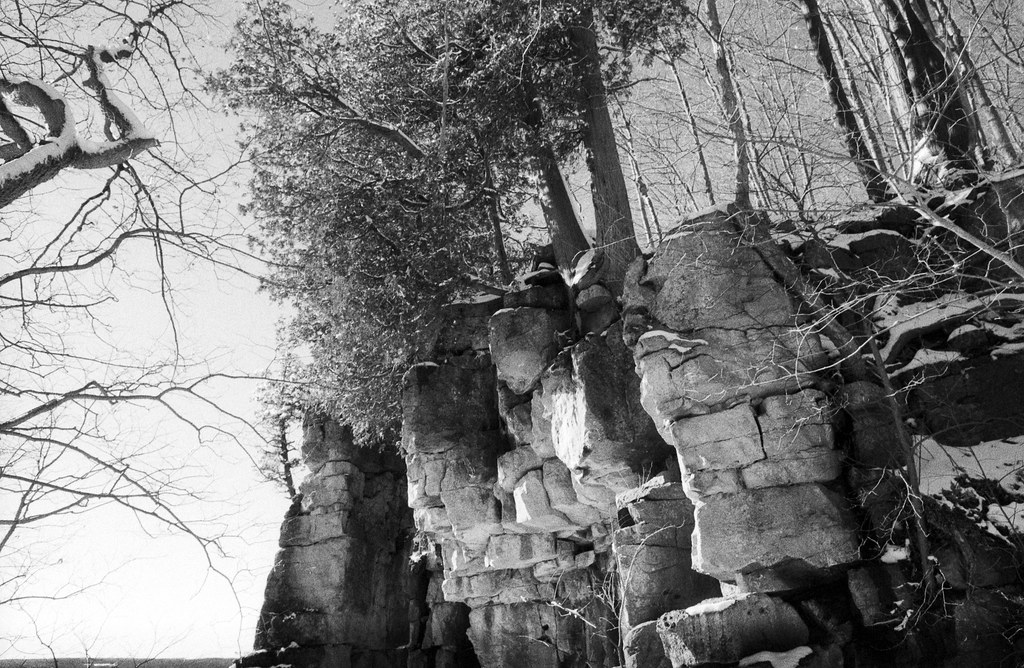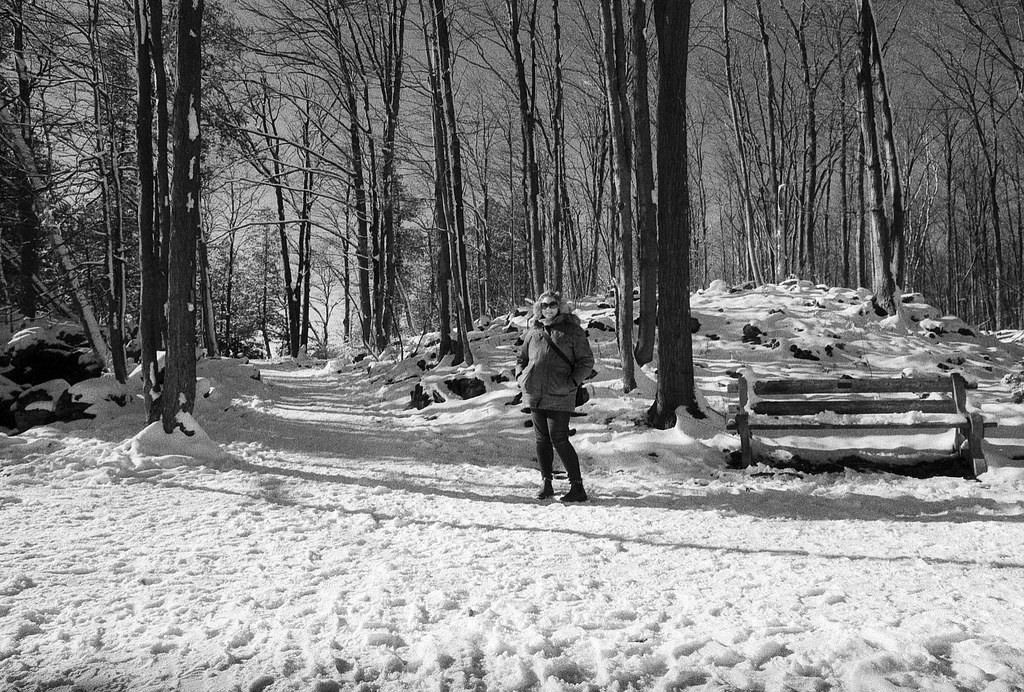While I did it, I managed to include almost all the parks in my region and operated by Conservation Halton. At least the parks are more aimed towards hiking, and today we’re at what is considered the most beautiful of all the parks. Rattlesnake Point may not have any incredible history connected to the property it does have some of the oldest surviving trees in the region. The park is an untouched space that if you’re there on a quiet day, you can get a real sense of place and how things used to be long before we arrived.

Unlike many other parks in the Halton Parks system, there is no natural history connected to Rattlesnake Point. The area never held farms, old mills, or quarries. But that doesn’t mean it is not enjoyable by any means. While I often look for human history, it is all about natural history. The one thing that everyone in my part of Ontario knows about the Niagara Escarpment, if you’ve turned around and looking for something to navigate towards, the bluff will always lead you where you want to go—created during the last great ice age during a glacial retreat. The same retreat also formed the earliest forms of the Great Lakes. The result of unequal erosion and made up of dolomitic limestone. Starting at Rochester, New York, it goes along to the Niagara River, forming the mighty Niagara Falls and the bloody battlefield of Queenston Heights. It runs up to the Bruce Penisula and then through the Upper Penisula of Michigan and into Wisconsin! Rich forests followed, forming some of the world’s oldest standing woods; animals found a home as did humans, including the Neutral peoples. And Halton Conservation sought to protect that beauty when Rattlesnake Point was established in 1961. Although the chosen name remains a mystery to the source, it could come from when the Mississauga Rattler thrived in the region or the snake-like cuts running through the cliffs. While Rattlesnake Point lacks any human history, it makes up for it in natural beauty as you can wander ancient paths and see trees that have stood for over a thousand years. From several lookouts, you can see out as far as the eye can see and even wander down into a local canyon.


While the snow and blue sky certainly made for a fantastic day to make images, it also turned the trails into a bit of a mess. The original plan for Heather and me was to walk to the lower path, which is both wide and flat. Which makes it easy to navigate; there are some side trails out to lookout points. The trouble is that the access road down and up were blocked off, probably because it’s difficult to clear in the winter. And probably would have given me a run for my money to get back up to the main road in the Kia, so we stuck to the upper trail, which isn’t as easy, especially in the winter. So we didn’t make it too far along; rather than only shoot a small part of the roll and say ‘enough’ at 25, I started to bracket my shots and still shot the whole roll, not in the true sense of the word, but after a fashion. I would shoot one frame slightly over-exposed and another somewhat under-exposed with the brilliant conditions. Or one in landscape and one in portrait orientation. Because of that, I only ended up with about fifteen keepers, which made it easier to pick the images I included.


It was a day for landscapes, so the only lens I could think of to capture the true grandeur of the park was my trusty 24mm f/2.8, and thanks to the recent snowfall and the brilliant blue skies, I put on the pale-yellow filter to help cut down on those blues. I also decided to over-expose the film by a stop and shoot at ASA-200 as I find that produces the best overall image quality out of Fomapan 400. This week I did something crazy and developed with Adox Rodinal and not even stand-developing the film. Instead, I went with a 1+50 dilution and a long time for development. And from what I’ve seen throughout the year, the longer the development time, the better Fomapan 400 performs with standard developers. And right from the tank, the negatives looked terrific, but the real proof would come from the scans. Is there grain? Yes, but the images are also sharp and have a lot of detail pulled out, although I think the new scanner software helped out a bit? It turns out, Epson Scan doesn’t like Windows 11, so I switched up to Silverfast.


I cannot believe it, we’re onto the last week, and you won’t have to wait until next week to see it; Christmastime is here again! I’m in Toronto for an early morning visit to the Distillery District.